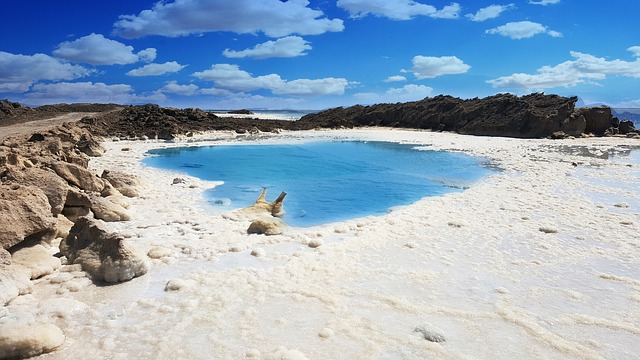Water from oceans and seas contains dissolved salts, atmospheric gases, and inorganic matter.
The density of water with dissolved substances is higher than pure water. Saltwater is water that contains dissolved salts.
Water from oceans and seas is salty. About 70% of the earth’s surface is covered by water in the seas and oceans, which means almost all water on the earth’s surface is salty. Water with dissolved salts is saline.
The amount of salt in a sample of saline water is denoted in parts per million; for example, 500g of salt dissolved in 1 million grams of water has its salinity expressed as 500 parts per million (500 ppm).
How Much Does Salt Water Weigh?
The weight of saltwater from different water sources differs according to dissolved salts. There are four categories of saline water
- Highly saline water
- Moderately saline water
- Slightly saline water
- Freshwater
Highly Saline Water
Water containing over 10000 ppm dissolved salt (mainly sodium chloride) is highly saline.
Water from seas and oceans is highly saline because leached mineral ions from the land are deposited in oceans and seas.
According to United States geological survey statistics, a liter of seawater contains about 35 g of dissolved salt.
If we express the salinity above in parts per million,
35g of salt are found in 1000g
Number of grams in 1000000g of water
=(35×1000000) ÷1000
=35000ppm
Moderately Saline Water
Water with salinity between 4000 and 9000 ppm is moderately saline. Moderately saline water is found in wells and boreholes.
Underground water has between 3 to 9 grams of dissolved salts in one liter of water. To express this saltiness in ppm:
3g of salt is found in 1000g of water
Amount of salt in 1000000g of water
=(3×1000000)÷ 1000
=3000ppm
The salinity of this water can be lowered by adding water softeners or boiling.
Slightly Saline Water
The salinity of slightly saline water ranges from 1000-2000 ppm. Water from rivers is slightly salty.
A water sample from a river contains about 1.7g of salt per liter.
Salinity in ppm=( 1.7 x 1000000) ÷ 1000
=1700 ppm
Slightly saline water is used for irrigation in some parts of the world.
Fresh Water
Water containing less than 1g per liter of dissolved salts is fresh.
Rainwater and water from lakes with outlets are fresh and suitable for human consumption.
Rainwater contains a negligible amount of dissolved salts, while lake water contains about 0.35g of salt per liter.
Salinity in ppm = (0.35x 1000000)÷1000
=350ppm
Weight of Salt Water

How much salt water weighs depends on the salinity level of water. Seawater has more dissolved salt than water from lakes, rivers, and rain.
Since the earth’s surface is 70% high salinity water, we can calculate the mass of saltwater as follows:
Saltwater has 35g of salt per 1000g of water
The density of water is 1g/cm3
Mass of 1000cm3 seawater =1000+35 = 1035 g
The relative mass of saltwater to pure water= 1035/1000=1.035
Saltwater is 1.035 heavier than pure water
Generally, saltwater weighs 3.5% more than pure water.

